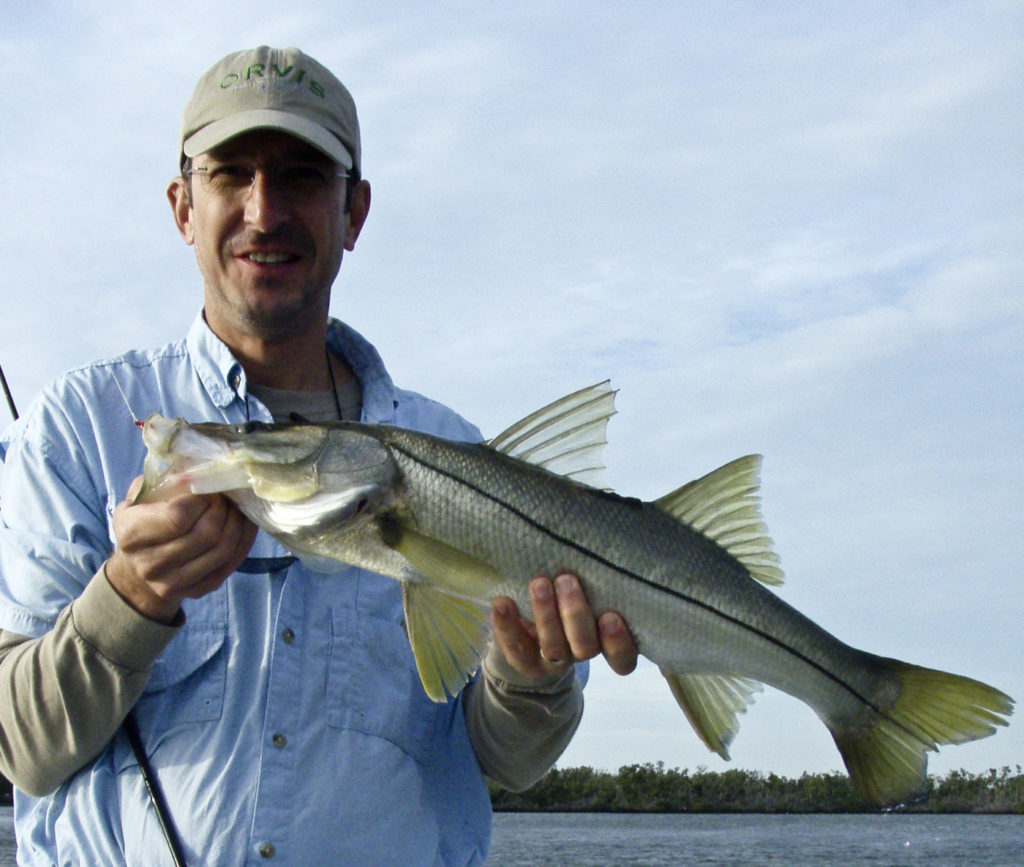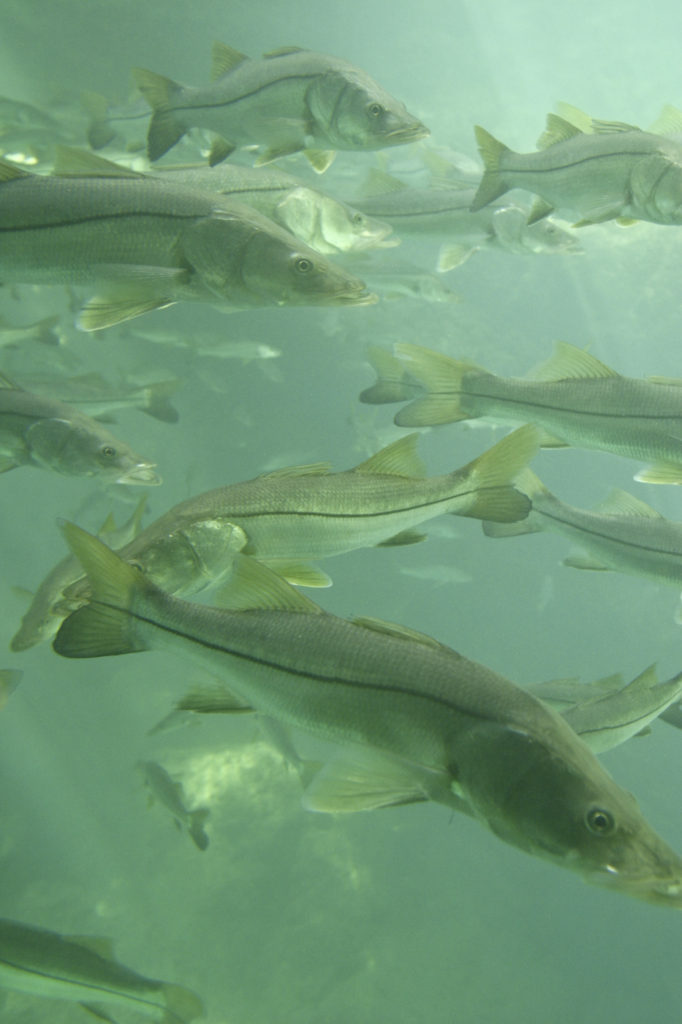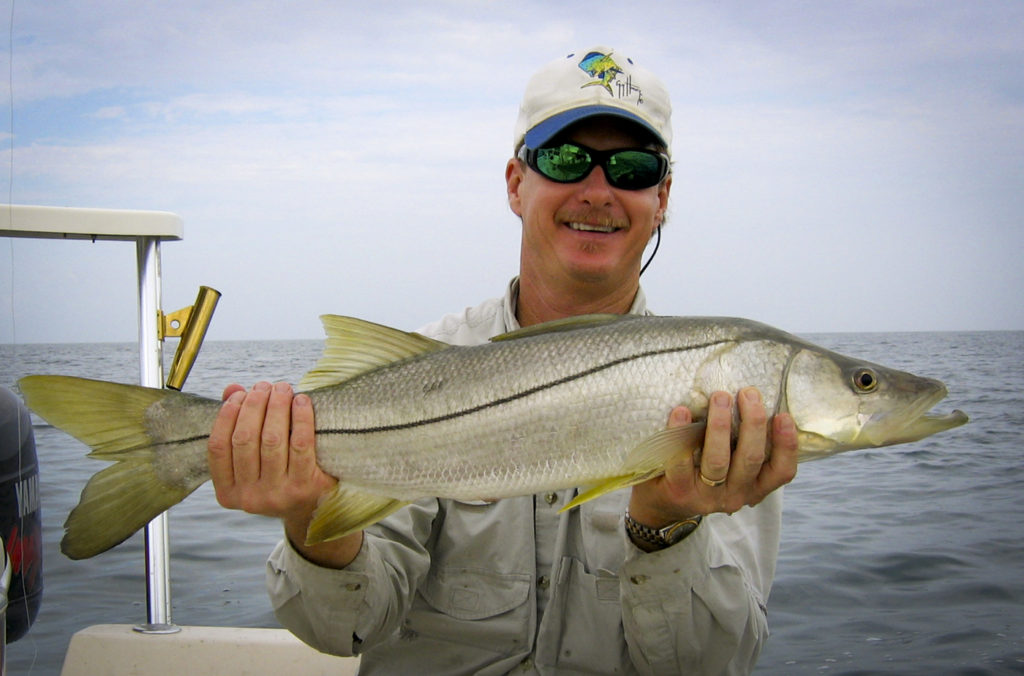LET’S GO FISHING ON FLORIDA’S BIG BEND! LESSON #2: SNOOK

Story by Capt. Tommy Thompson
Until recently, there was nothing “common” about catching common snook (Centropomus undecimalis) on our Big Bend Gulf of Mexico coast. Historically (at least in my 70 years!) snook were pretty much limited by cooler water to the Gulf of Mexico south of Anclote Key in Tarpon Springs. But, in the last few years, with warming winters and the accompanying warmer Gulf waters, they now range as far north as Taylor County, in our Natural North Florida region.

The “poleward” northern movement of snook as followed the range of two specie of mangrove bushes that offer protection to juveniles of the species. And, when infrequent cool “snaps” hit the coast, our springs and spring fed rivers also offer protection with their warmer waters.

Snook, AKA “linesiders” or robalo, are protected by law. You may keep snook of certain sizes, so long as they are caught in season:
Season: Closed Dec. 1-end of February and May 1-Aug. 31 NOTE: All state waters from the Hernando/Pasco county line through Gordon Pass in Collier County is catch-and-release ONLY through Aug. 31, 2021
Slot Limit: Not less than 28″ or more than 33″ total length
Daily Bag Limit: 1 per harvester per day; zero captain and crew for-hire limit*
On our Big Bend, expect to find snook along rocky shorelines where currents are strong, feeding into the tide. They often range well up rivers on the Big Bend, as they are euryhaline, able to survive in both salt and fresh waters. These fish are hard fighters and have the ability to wrap line around structure, or cut it with their sharp gill plates. Heavy, and transparent, fluorocarbon leaders are essential as is moderately heavy tackle. Snook are ambush feeders and will strike both live and artificial baits. Soft artificial swimbaits like a light colored D.O.A. Bait Buster work well. For live bait, use big shrimp or small pinfish or pigfish, but care must be taken to keep them very lively and fresh.
*Finally, in spite o their popularity and numbers consider these strong fighters to be endangered. In fact, in certain parts of the state, keeping one is prohibited, even in season due to red tide and other environmental factors. Catch and release is encouraged

